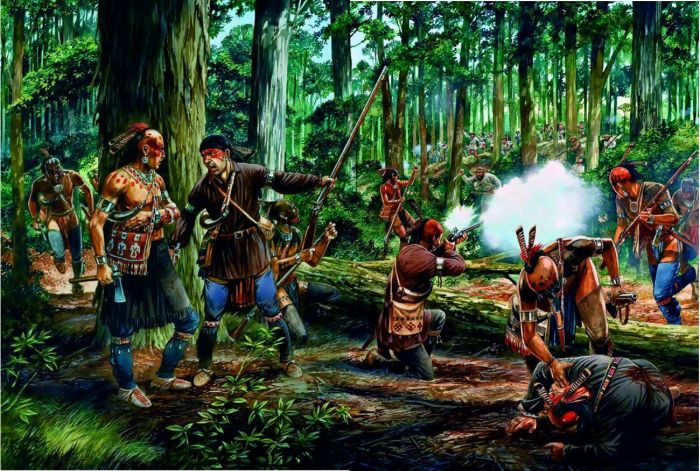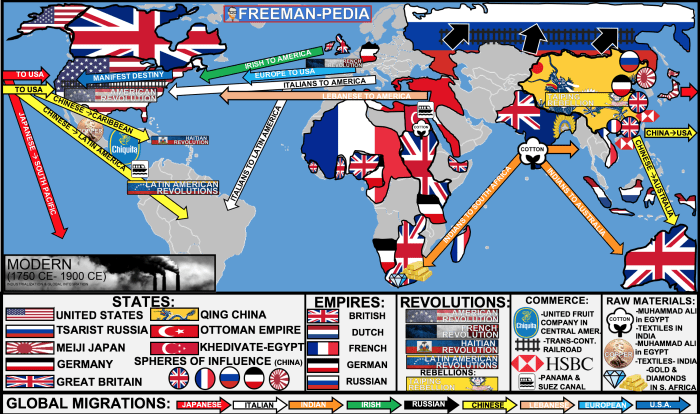Embark on a captivating journey with our French and Indian War Webquest, where history unfolds before your eyes. Immerse yourself in a conflict that shaped the destiny of North America, leaving an indelible mark on its people and the course of events that followed.
Delve into the intricacies of this pivotal war, from its genesis to its profound aftermath. Unravel the motivations and strategies of key players, witness the impact on Native American tribes, and trace the rise of a young George Washington. Prepare to be enlightened as we unravel the Treaty of Paris and its far-reaching consequences.
Overview of the French and Indian War
The French and Indian War, also known as the Seven Years’ War, was a global conflict that took place from 1754 to 1763. It was fought between Great Britain and France, with their respective Native American allies, for control of North America.
The war began over conflicting claims to land in the Ohio River Valley. The British wanted to expand their colonies westward, while the French sought to protect their fur trade empire in the region. The war quickly escalated into a full-scale conflict, with battles taking place across North America, Europe, and India.
Timeline of Key Events
The following is a timeline of key events in the French and Indian War:
- 1754: The war begins with the Battle of Jumonville Glen.
- 1755: General Edward Braddock leads a British expedition against Fort Duquesne, but is defeated at the Battle of the Monongahela.
- 1757: The British capture Louisbourg, a major French fortress in Nova Scotia.
- 1758: The British capture Fort Duquesne and rename it Fort Pitt.
- 1759: The British capture Quebec City, the capital of New France.
- 1760: The British capture Montreal, the last major French stronghold in North America.
- 1763: The Treaty of Paris ends the war, with Great Britain gaining control of all of French North America.
Impact of the War
The French and Indian War had a profound impact on the development of North America. The war resulted in the expulsion of the French from North America, and the expansion of British territory. The war also led to the Pontiac’s Rebellion, a Native American uprising against British rule.
The war also led to the Proclamation of 1763, which prohibited British colonists from settling west of the Appalachian Mountains.
Key Players in the War

The French and Indian War was a complex conflict involving various participants with distinct motivations and strategies. The primary belligerents were France and Great Britain, supported by Native American tribes on both sides.
France
- Motivations:Expand its colonial empire in North America, secure control of the Ohio River Valley, and limit British influence in the region.
- Strategies:Built a series of forts in the Ohio Valley, allied with Native American tribes to harass British settlements, and launched military campaigns against British forces.
Great Britain
- Motivations:Prevent French expansion, protect its own colonies, and gain access to new territories for settlement and trade.
- Strategies:Sent troops to North America, established alliances with Native American tribes, and conducted military campaigns against French forces.
Native American Tribes
Native American tribes played a significant role in the war, aligning with both France and Great Britain based on their own interests and grievances.
- Pro-French Tribes:Huron, Ottawa, and Delaware. Motivated by a desire to protect their lands from British encroachment and to resist British expansion.
- Pro-British Tribes:Iroquois Confederacy. Motivated by a desire to maintain their traditional lands and to secure British protection against French encroachment.
Alliances and Conflicts
The war was characterized by shifting alliances and conflicts among the participants. France and Great Britain competed for the support of Native American tribes, often through diplomacy and gifts.
- French Alliances:France formed alliances with numerous Native American tribes, including the Huron, Ottawa, and Delaware, who provided valuable support in the form of scouting, raiding, and warfare.
- British Alliances:Great Britain allied with the Iroquois Confederacy, which played a crucial role in the war by disrupting French supply lines and attacking French settlements.
Impact on Native American Tribes
The French and Indian War had a profound impact on Native American tribes, disrupting their territories, alliances, and way of life. The war forced tribes to choose sides between the French and British, leading to internal divisions and conflicts.
The war also resulted in the loss of Native American land, as both the French and British claimed vast territories for themselves. This led to the displacement of many tribes and the disruption of their traditional hunting and farming grounds.
Alliances and Warfare
The war also had a significant impact on Native American alliances. Some tribes allied with the French, while others allied with the British. These alliances often led to conflict between tribes, as they fought alongside their European allies.
Long-Term Consequences
The long-term consequences of the French and Indian War for Native Americans were devastating. The war led to the loss of land, the disruption of traditional ways of life, and the weakening of Native American alliances. This made it more difficult for Native Americans to resist European encroachment and assimilation.
Role of George Washington
George Washington played a significant role in the French and Indian War. As a young officer in the Virginia militia, he led several military campaigns that helped shape the course of the war.
Military Campaigns
Washington’s most notable campaign was the Battle of Fort Necessity in 1754. Despite being outnumbered and outgunned, Washington and his troops fought valiantly against a larger French force. Although they ultimately surrendered, the battle gained Washington recognition and experience.
In 1755, Washington led the Braddock Expedition, an attempt to capture Fort Duquesne. However, the expedition ended in disaster when French and Native American forces ambushed the British troops. Washington, who served as an aide-de-camp to General Edward Braddock, narrowly escaped death.
Despite these setbacks, Washington continued to fight in the war. He played a key role in the British victory at the Battle of Quebec in 1759, which effectively ended French control of North America.
Impact on Later Career
Washington’s experiences in the French and Indian War had a profound impact on his later career. He gained valuable military experience and leadership skills that would serve him well during the American Revolutionary War.
The French and Indian War webquest provides an in-depth look at this historical conflict. Just like how tissues are the building blocks of living organisms, understanding the French and Indian War is essential for comprehending the fabric of American history.
The ch 4 tissue the living fabric concept further emphasizes the importance of understanding the intricate connections within complex systems. By delving into the French and Indian War webquest, you’ll unravel the threads that shaped the tapestry of American history.
The war also helped shape Washington’s political views. He became increasingly critical of British policies and the treatment of the American colonies. These experiences contributed to his decision to support American independence.
Treaty of Paris (1763)
The Treaty of Paris, signed on February 10, 1763, formally ended the French and Indian War. It had far-reaching consequences for the boundaries and power dynamics in North America, as well as for the future of the United States.
Terms of the Treaty
The treaty included the following key provisions:
- France ceded all of its territory in North America east of the Mississippi River to Great Britain, except for New Orleans and a small area around it.
- Spain ceded Florida to Great Britain in exchange for the return of Havana, which had been captured by the British during the war.
- Great Britain recognized the Mississippi River as the western boundary of its North American colonies.
- France retained its Caribbean colonies and fishing rights off the coast of Newfoundland.
Impact on Boundaries and Power Dynamics
The Treaty of Paris had a profound impact on the boundaries and power dynamics in North America. Great Britain emerged from the war as the dominant power in the region, controlling vast territories from the Atlantic coast to the Mississippi River.
The treaty also had a significant impact on the Native American tribes of the region. Many tribes had sided with the French during the war, and they lost significant territory and power as a result of the treaty.
Significance for the Future of the United States, French and indian war webquest
The Treaty of Paris was a major turning point in the history of the United States. It removed the threat of French expansion into the Ohio Valley, which allowed the American colonies to expand westward. It also paved the way for the American Revolution, as the colonists grew increasingly resentful of British rule.
Essential FAQs: French And Indian War Webquest
What were the primary causes of the French and Indian War?
Territorial disputes, trade rivalries, and the expansionist ambitions of France and Great Britain.
How did the war impact Native American tribes?
It disrupted their alliances, altered their territories, and led to significant population losses.
What was the significance of the Treaty of Paris?
It ended the war, granted Britain control of vast territories in North America, and marked a turning point in the balance of power.

